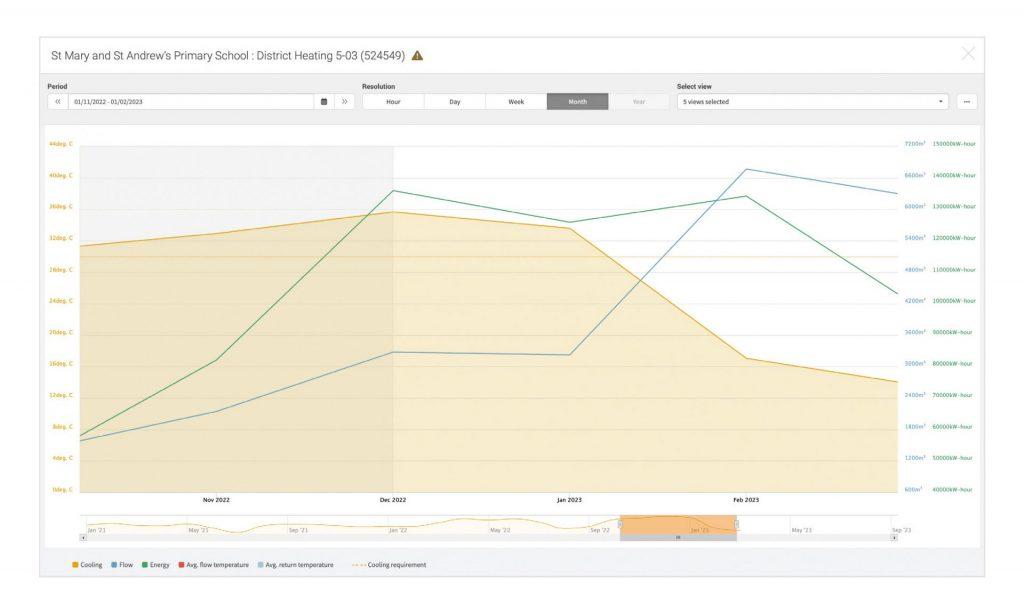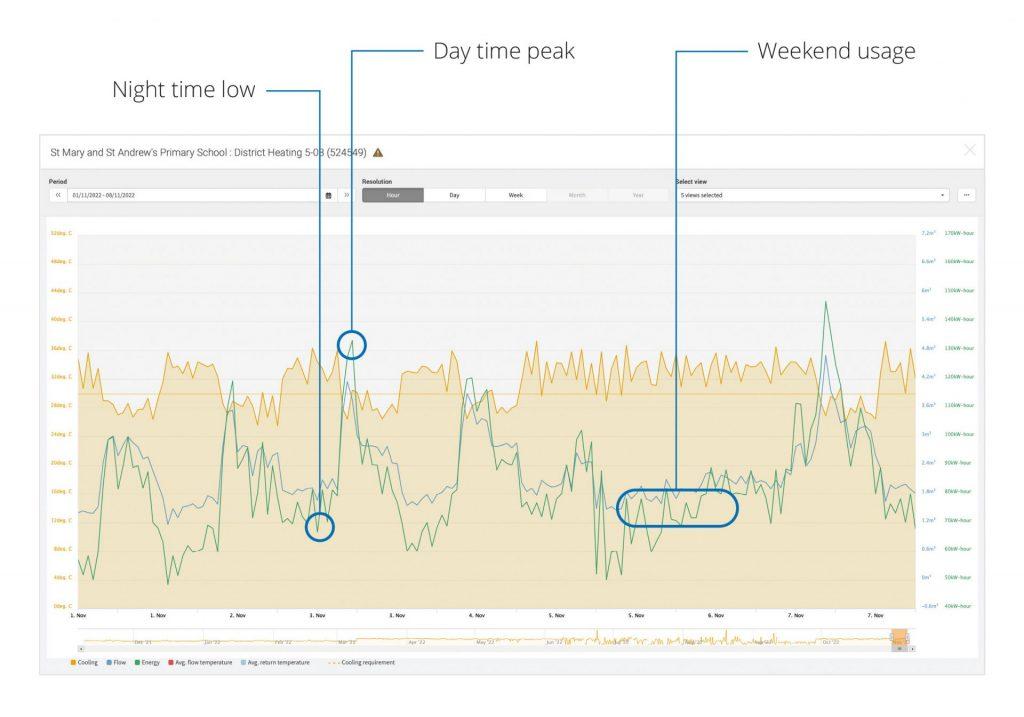When it comes to heating buildings in the UK, it seems our biggest challenge isn’t so much an energy crisis as an energy-waste crisis.
Historically, we have largely ignored the performance of space heating systems for two reasons: energy was cheap, and carbon emissions were of little concern. But with today’s skyrocketing gas prices, rising inflation, energy security concerns, and impending net-zero targets – if this isn’t the time to embrace efficiency with open arms, when is?
The good news is that there’s plenty of room for improvement. For example, a recent whitepaper by Danfoss found that
“In the European Union (EU) alone, excess heat amounts to 2,860 TWh/y, almost corresponding to the EU’s total energy demand for heat and hot water in residential and service sector buildings.”
In a nutshell, we already generate all the heat we require; we just need to make smarter use of it.
The scale of the challenge is on full display in the education sector. Over 60% of our schools were built before 1976, and from a heating perspective, they’re prime examples of inefficiency in action. Despite ongoing funding crises and around half of UK schools considering layoffs to reduce costs, most are continually (and unknowingly) wasting vast sums of money on neglected, inefficient space heating. The problem largely stems from the lack of visibility; as long as classrooms remain warm, there’s little or no interest in whether their heating systems are working efficiently or even correctly. Compounding the issue, old gas boilers lack any form of monitoring, making exorbitant energy bills the new normal as schools have no simple means of comparison.
In addition to these financial struggles, there are growing headwinds on the environmental front as well. As part of the government’s 2050 net-zero target, the Department for Education (DfE) declared that new schools should consume a mere 8 kWh per square meter for room heating. Yet staggeringly (but perhaps unsurprisingly), many existing schools average more than ten times this amount. Then there’s also the issue of classroom air quality, which directly impacts students’ concentration and general well-being. In a recent UK teacher survey, the majority named old heating appliances as a leading cause of poor indoor air quality – reinforcing the connection between heating performance and academic performance.
In response to these challenges, many schools are taking green measures such as installing large solar arrays or replacing gas boilers with complex networks of heat pumps. However, without first taking steps to improve efficiency, these capital-intensive efforts are chasing targets that will continue moving further away.
To make meaningful progress toward net-zero emissions, schools and other organisations first need to close the energy performance gap. This requires a three-stage approach: reducing energy waste, making existing systems more efficient, and investing in renewable or low-carbon heating and electricity.
Reducing waste starts with measuring energy consumption and comparing the data against pre-defined criteria. Schools and facility managers can begin this process by adopting digital energy metering, which countries like Denmark have used successfully for over 20 years. These systems automatically capture hourly readings from heating, electricity, and water meters and then determine the average kWh/m2, the vital baseline needed to reduce heating demands. Unlike the low-resolution overviews provided by monthly readings, hourly readings generate 8,760 annual data points from each meter, making it simple to identify consumption spikes or excessive heating outside of school hours.
For the best long-term results, digitalisation forms one element of a holistic approach combining education, planning, and user-friendly reporting. Engaging a digital platform puts valuable data in the hands of the people who need it, coupled with smart incentives that drive productive behaviour. For example, an alert about a heating malfunction may prompt a facility manager to schedule a service call – but what if the notification also included the financial cost of not addressing the problem? Basic human psychology tells us this method will deliver faster and more positive customer outcomes.
For managers overseeing complex portfolios, digitalisation also unlocks energy benchmarking, making it simple to prioritise sites that can achieve the highest cost and carbon savings. In many cases, monitoring identifies schools that heat empty classrooms on weekends, a straightforward problem to rectify that can immediately reduce consumption by up to 20%. To improve efficiency, schools can also adopt mechanical ventilation with heat recovery (MVHR), which can save 4.5 times the energy compared to traditional ventilation solutions.
As part of the national net-zero push, a growing number of schools are upgrading to communal heat networks for space and water heating. Within these systems, maximising the difference between the supply and return temperature (delta T) is vitally important. In fact, lowering the return temperature from 50°C to 35°C can reduce pumping and water requirements by around 40%. Using a digital monitoring platform, facility managers can configure alarms to help them make immediate and informed performance improvements. In addition to offering greater economy, heat networks can also be designed to utilise waste heat from local industry and other sources, increasing the sustainability of the entire system.
In many ways, the UK’s energy-waste crisis reinforces the age-old business mantra that you can’t manage what you don’t measure. Without digitalising energy consumption, schools will continue flying blind and squandering their vital funds on ineffectual heating. In addition, with amplifying calls to decarbonise, energy efficiency is critical to minimising the cost and complexity of green investments. After all, why sink precious capital into hundreds of solar panels or oversized heat pumps, when it’s easier to reduce consumption and spend the money on staff and resources instead?
The good news is that all of the required monitoring and low-carbon technologies are available today; what’s needed is a holistic, results-driven approach to building energy management. By embracing digitalisation, UK schools can reduce costs and emissions, increase academic performance, and make net zero a pathway to a more sustainable education system.


*data/graph from the same school
